SRM University-AP, Andhra Pradesh inaugurates Orientation Programme 2020
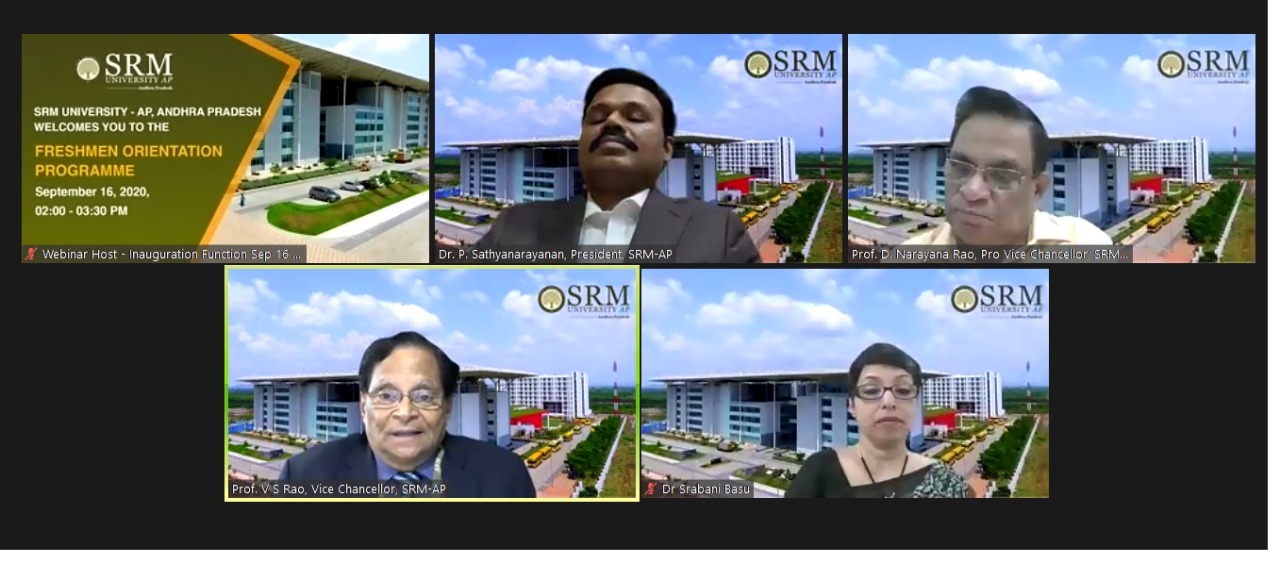 The inauguration of the Orientation Programme organized to welcome the fresh batch of students at SRM University-AP, Andhra Pradesh was preceded by an introduction of the various aspects of the university by the management. The dynamic leaders motivated the Freshmen by revealing the differentiating factor of SRM AP that endorses the excellence of the university. Upon invocating the blessings of the Almighty by a prayer, the occasion commenced with an address by Dr P Sathyanarayanan, President. He highlighted his vision of learning beyond the classroom, fostering wisdom and knowledge of the students through a holistic interdisciplinary approach.
The inauguration of the Orientation Programme organized to welcome the fresh batch of students at SRM University-AP, Andhra Pradesh was preceded by an introduction of the various aspects of the university by the management. The dynamic leaders motivated the Freshmen by revealing the differentiating factor of SRM AP that endorses the excellence of the university. Upon invocating the blessings of the Almighty by a prayer, the occasion commenced with an address by Dr P Sathyanarayanan, President. He highlighted his vision of learning beyond the classroom, fostering wisdom and knowledge of the students through a holistic interdisciplinary approach.
Further, Prof V S Rao, Vice-Chancellor, acquainted students with the various processes of SRM AP. He informed students regarding his revolutionizing plans for the students of emphasizing on research from the first semester. He states, “Research should be seamlessly integrated with academic boundaries”. He also inspired students to realize the excitement of science, joy in engineering, and academic rigour. In line with his vision, Prof D Narayana Rao, Pro Vice-Chancellor, emphasized on the contribution of science and technology that led to the progress and superiority of India across nations. Further, he assures quality education to motivate students and urged them to contribute to the development of the nation.
To continue with the orientation programme, eminent personalities have been requested by SRM AP to initiate motivational discussions. Dr. Jaya Prakash Narayana, Former Secretary to Govt. of Andhra Pradesh, Dr R A Mashelkar, FRS, Former Director General CSIR & Chancellor-JIO University, Padma Bhushan Dr. K. Varaprasad Reddy, Chairman Emeritus-Shantha Biotech, Mrs Saritha, IPS, Additional SP-CID, Dr MC Das, Management Consultant-Vijayawada, and Head of the Dept. of Commerce (Retd.)-Loyola College, Mr Vivek Bhide, Entrepreneur, Co-Founder, and Managing Director-TSL Consulting Pvt Ltd, VV Lakshminarayana, Former Joint Director- CBI, Ms Karuna Gopal, President-Foundation for futuristic cities, Mr Ramesh Loganathan, Professor Co-Innovation/Outreach at IIIT Hyderabad, and Ms Anitha Sakuru, Chief Marketing officer-Platifi Solutions, will be delivering lectures during various sessions sprawled across the 2 week programme organized to encourage Freshmen.
Dr Nimai Mishra’s research on popular fluorescent nanoparticles get published in reputed journal
Amine-free air- stable perovskite nanocrystals for future optoelectronic devices
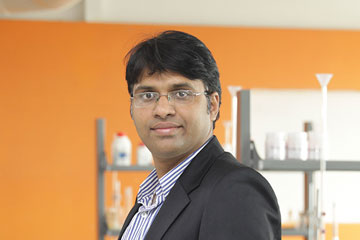
Dr. Nimai Mishra, Department of Chemistry, SRM University-AP, Andhra Pradesh, along with his research group comprising of his Ph.D. students – Mr. Syed Akhil and Ms. V.G.Vasavi Dutt, have published “Completely Amine-free Open Atmospheric Synthesis of High Quality Cesium Lead Bromide (CsPbBr3) Perovskite Nanocrystals” in the journal “Chemistry-A European Journal” (Wiley-VCH, Impact factor 4.86).
Cesium Lead Halide Perovskite Nanocrystals (NCs) CsPbX3 (X=Cl, Br, and I) have gained popularity in the last few years due to their high Photoluminescence Quantum Yield (PLQY) owning for Light Emitting Diodes (LEDs), and other significant applications in Photovoltaic and Optoelectronics. Dr Mishra says, “In this research work, we demonstrated a facile and efficient amine- free synthesis of Cesium Lead Bromide Perovskite Nanocrystals using Hydrobromic acid as halide source and n-trioctylphosphine (TOP) as ligand in open atmospheric conditions.” He further explains, “The hydrobromic acid (HBr) served as labile source of bromide ion, thus, this three-precursor (separate precursors for Cs-Pb-Br) approach gives more control over conventional single-source precursor for Pb and Br (PbBr2). The use of HBr paved the way to eliminate oleylamine, as a result, we can completely exclude the formation of labile oleylammonium ion halide.”
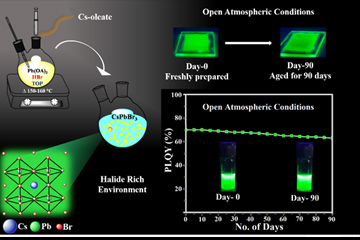 Dr Mishra and his research group extensively studied the various Cs-Pb-Br molar ratio and found an optimum condition that was able to stabilize with high PLQY CsPbBr3 NCs. These completely amine-free CsPbBr3 perovskite NCs synthesized using bromine-rich condition, exhibit good stability and durability for more than three months in the form of colloidal solutions and films respectively. Furthermore, they demonstrated stable tunable emission across a wide spectral range, via anion exchange process. More significantly, their work presents an open atmospheric stable CsPbBr3 NCs films demonstrating high photoluminescence (PL), which can be further used for optoelectronic device applications.
Dr Mishra and his research group extensively studied the various Cs-Pb-Br molar ratio and found an optimum condition that was able to stabilize with high PLQY CsPbBr3 NCs. These completely amine-free CsPbBr3 perovskite NCs synthesized using bromine-rich condition, exhibit good stability and durability for more than three months in the form of colloidal solutions and films respectively. Furthermore, they demonstrated stable tunable emission across a wide spectral range, via anion exchange process. More significantly, their work presents an open atmospheric stable CsPbBr3 NCs films demonstrating high photoluminescence (PL), which can be further used for optoelectronic device applications.
These high-quality nanocrystals have the potential to be used as active material in LED devices. Advancing his research, Dr Mishra and his team are planning to make a prototype LED device using their nanocrystals.
Link to the research paper: Please Click Here
- Published in News, Research News
Students certified on successfully completing outreach programmes organized by IIRS-ISRO
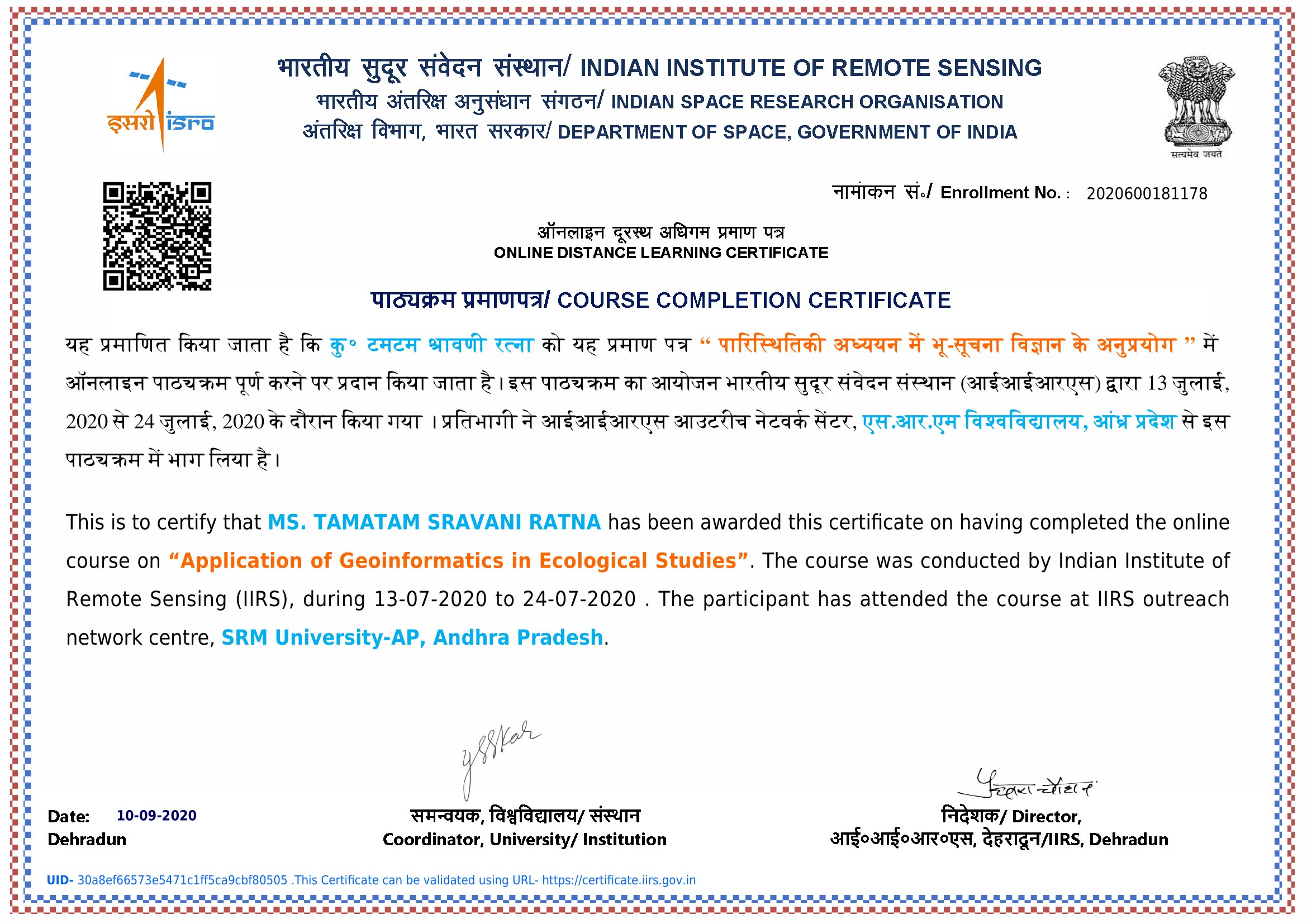
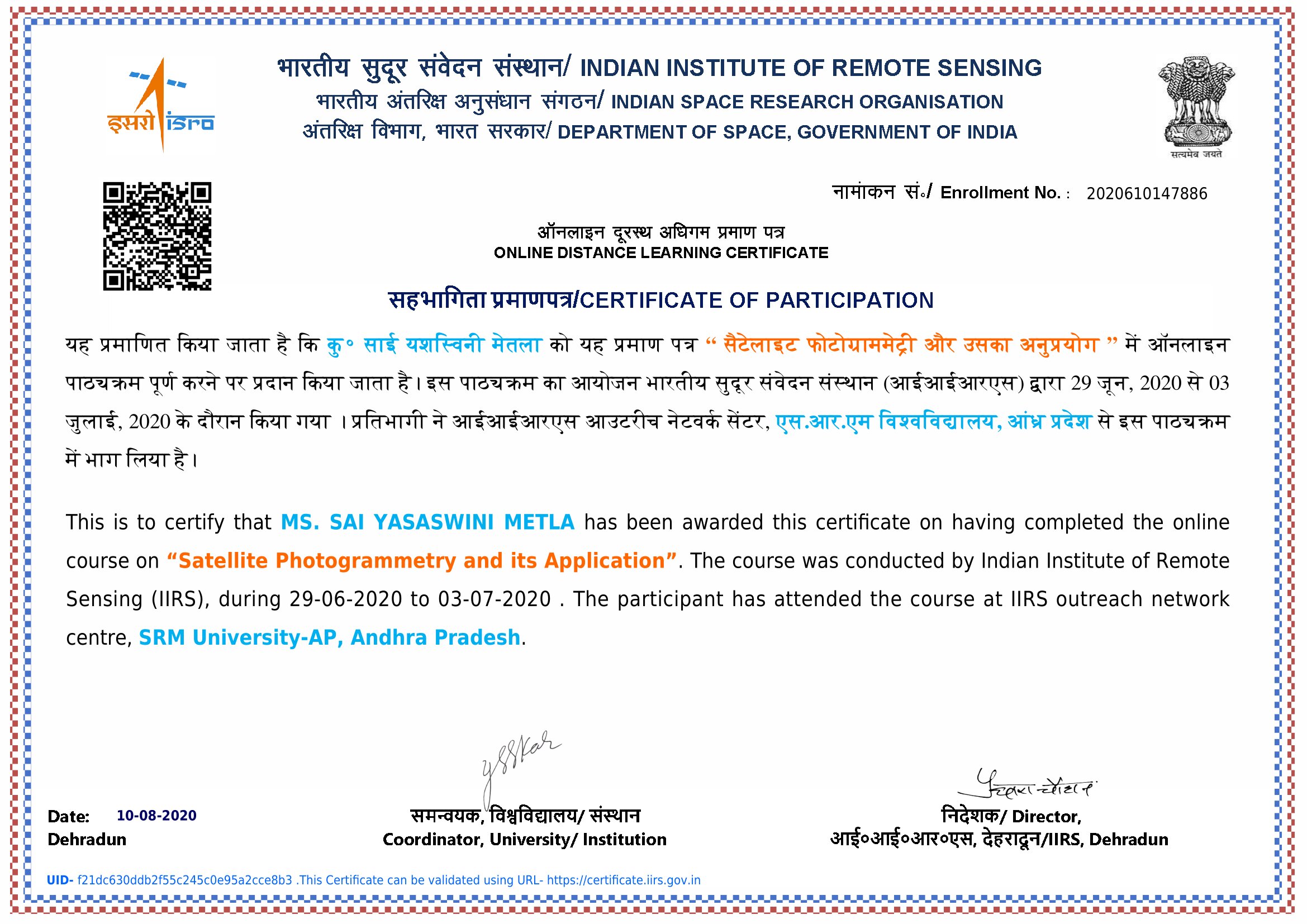
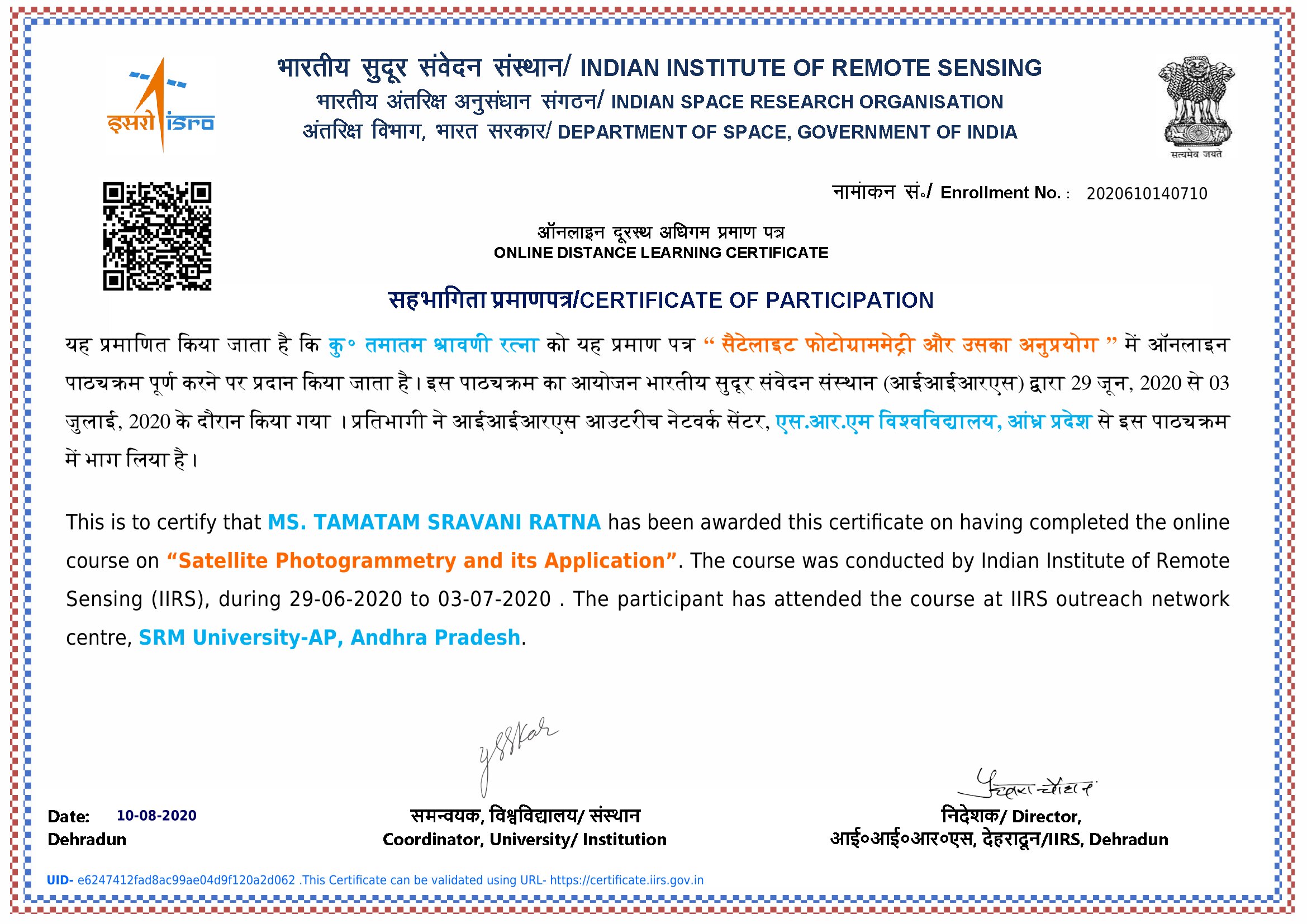
SRM University AP-Andhra Pradesh has collaborated with the Indian Institute of Remote Sensing (IIRS) -Indian Space Research Organization (ISRO)’s outreach programme. As part of the association, the students of SRM AP have the excellent opportunity to register for annual courses as well as live and interactive programmes being organized by IIRS-ISRO.
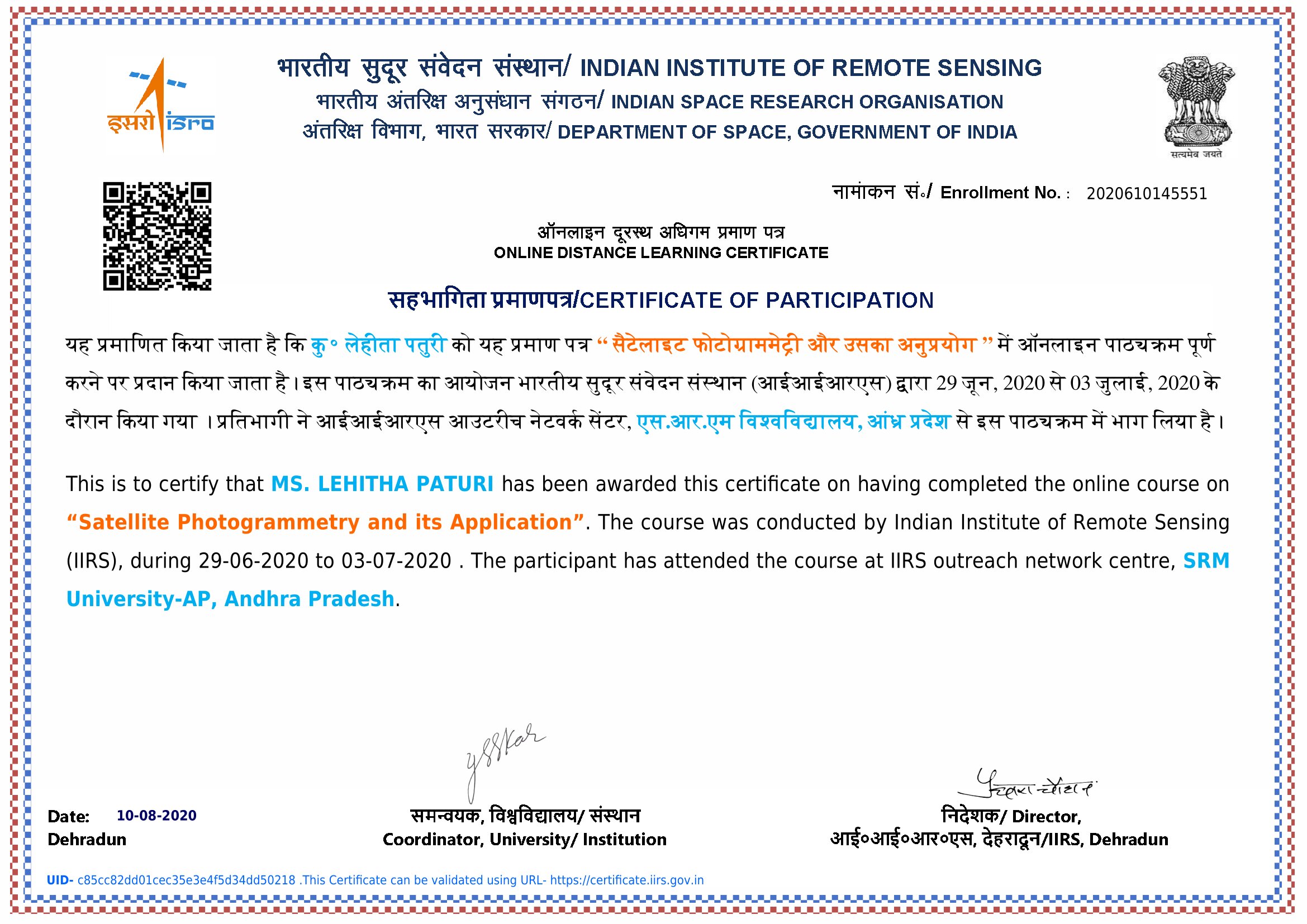
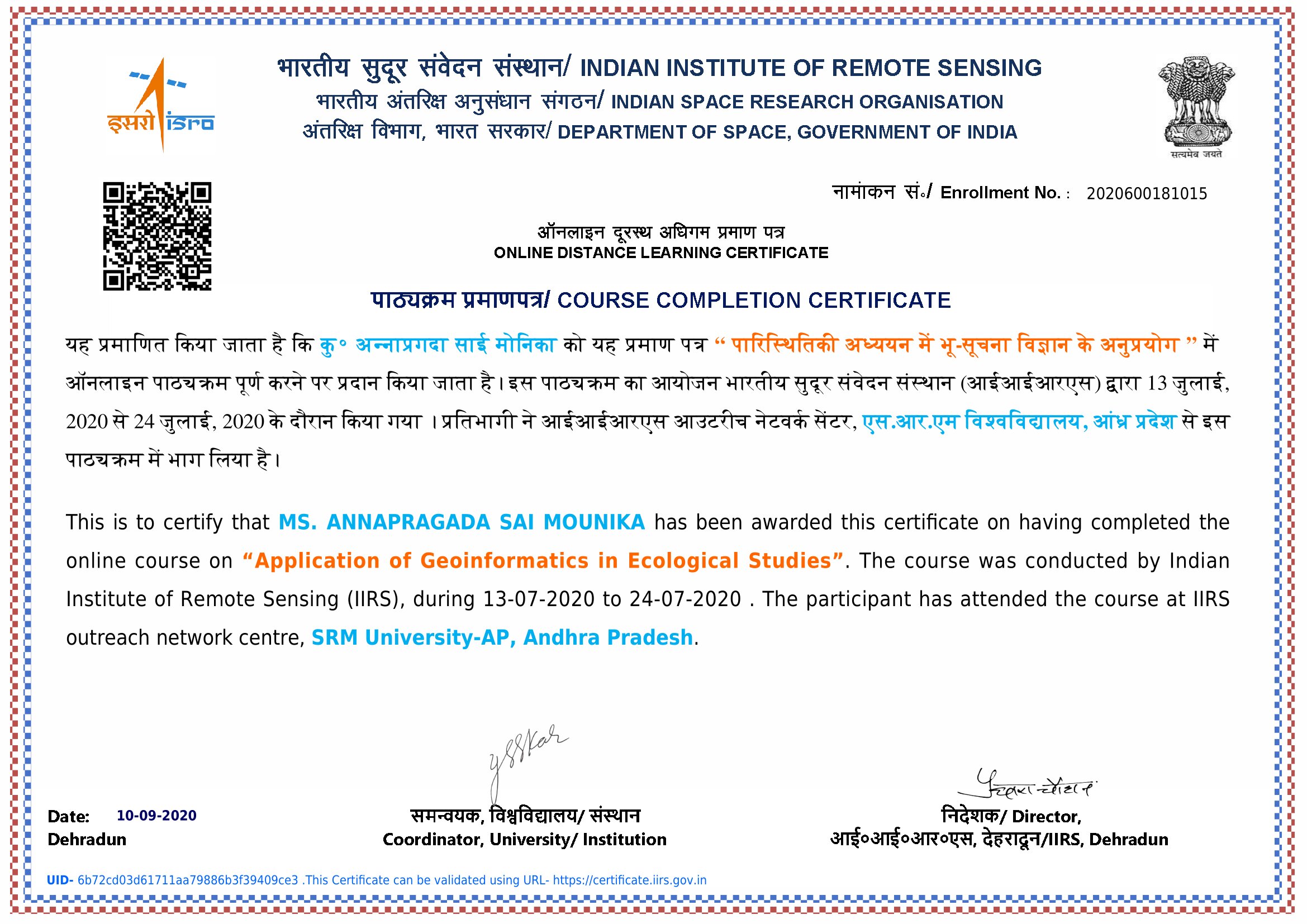
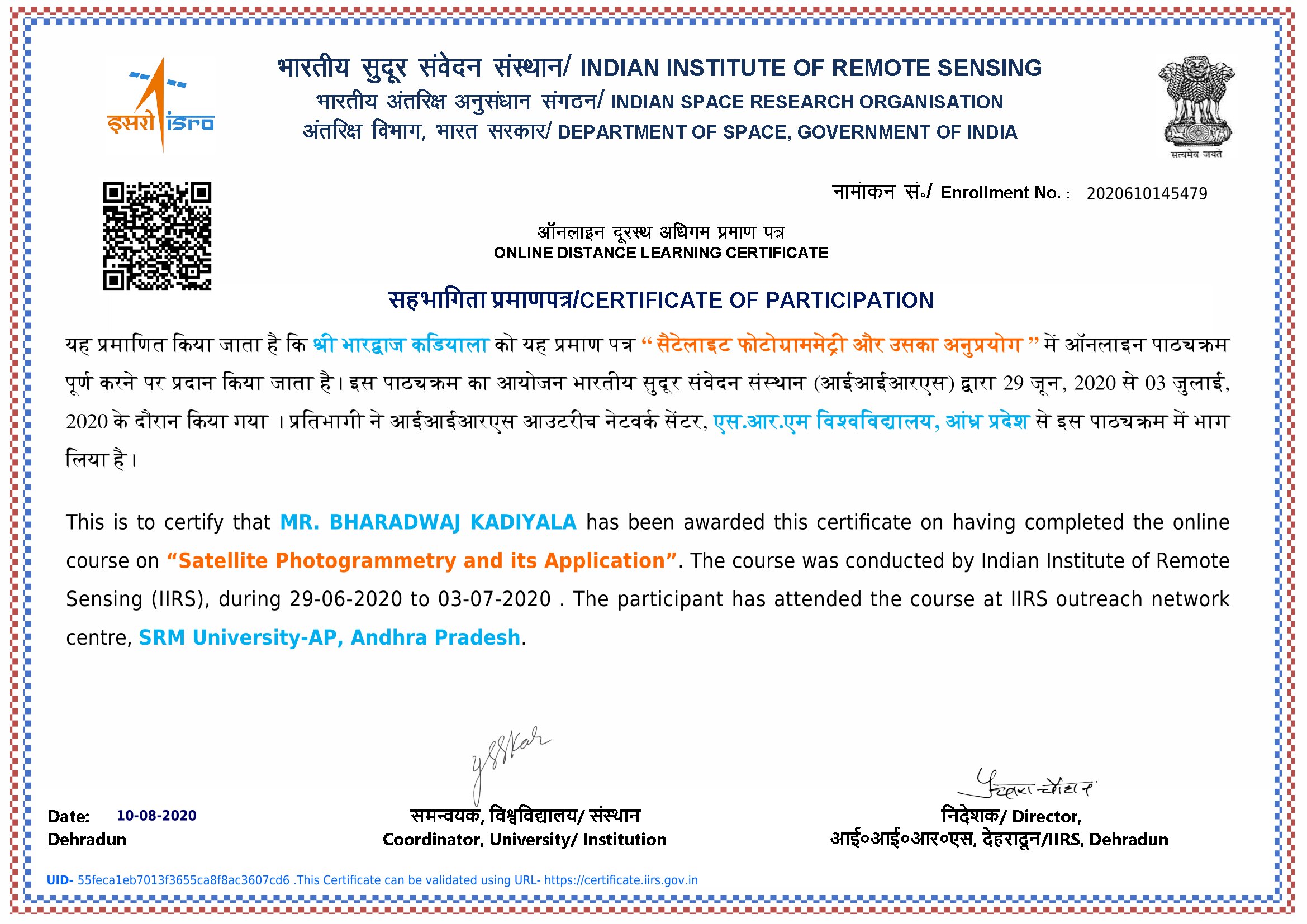
SRM AP encourages the students to proactively avail the interactive distance learning courses and webinars that will enable them to achieve their career goals in aerospace and geospatial technologies and make a mark globally.
- Published in ECE Events, ECE NEWS, News
Dr Karthik Rajendran proposes industrial solutions by exploring mechanisms to produce alternative fuel
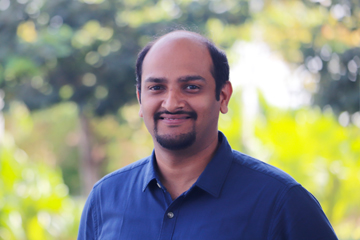
An intriguing paper on “Recent developments and strategies in genome engineering and integrated fermentation approaches for biobutanol production from microalgae” has been published in Fuel by Dr Karthik Rajendran, Department of Environmental Science, SRM University-AP, Andhra Pradesh. Fossil fuels such as petrol, coal, and natural gas deplete natural resources and increase emissions leading to global warming and climate change. As the transportation sector is heavily dependent on liquid fuels and only a few alternatives are available including ethanol, there is an urgent need for higher energy-dense liquid fuel, which is researched across the world, and butanol is considered as an alternative.
There is a constant conflict between food and fuel where the debate lies on whether to swap agricultural lands to produce fuel. An alternative to tackle this problem is identified to be microalgae which is the third-generation feedstock. This feedstock does not conflict with the production of food, as agricultural land is not necessary for its creation. In his work, Dr. Karthik explored different mechanisms for producing butanol from microalgae.
 Dr Karthik has been curious on developing industrially feasible solutions for bioenergy, waste management, and sustainability as these industrial solutions are least researched and transferred. This has motivated him to work on economically viable solutions for industries. Dr Karthik explains, “In this work, the mechanisms and fermentation strategies of butanol production from microalgae is explored. Advancing with the research, our team will work on identification of the bottlenecks pertaining to such pathways along with assessing the profitability of producing butanol from microalgae.”
Dr Karthik has been curious on developing industrially feasible solutions for bioenergy, waste management, and sustainability as these industrial solutions are least researched and transferred. This has motivated him to work on economically viable solutions for industries. Dr Karthik explains, “In this work, the mechanisms and fermentation strategies of butanol production from microalgae is explored. Advancing with the research, our team will work on identification of the bottlenecks pertaining to such pathways along with assessing the profitability of producing butanol from microalgae.”
Link to the research paper: Please Click Here
- Published in News, Research News

